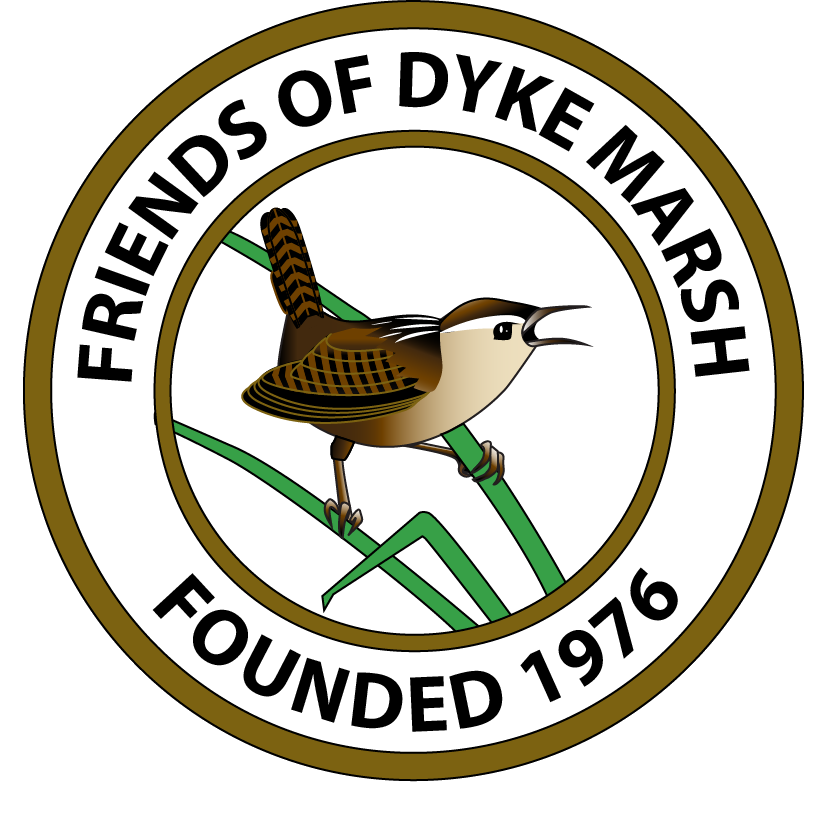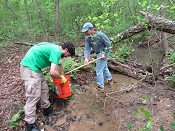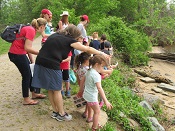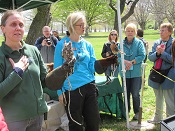On May 9, 2018, 20 dedicated volunteers and National Park Service (NPS) staffers planted around 1,500 native trees and plants on .65 acres on the west side of the Haul Road trail in Dyke Marsh. Among others, the group planted spicebush and winterberry; trees included sycamore, tulip tree, cottonwood, maples and black gum; "phorbs" included wing stem, pyeweed, tick-trefoil and moonflower vine plus grasses such as deer-tongue, Virginia rye and riverside rye.
News
Determining the habitat quality of a stream flowing into Dyke Marsh from the west was the quest on May 5, 2018, when FODM volunteers conducted some biological testing of the stream flowing through Mount Vernon District Park. FODMers partnered with the Westgrove Dog Park PACK organization and led by Dan Schwartz, Northern Virginia Soil and Water Conservation District, took 20 samples from the stream within a 300-foot span, with the goal of identifying 100 living invertebrates. The group found 55 invertebrates, fewer than the desired 100. Forty of the 55 were scuds, considered to be impairment tolerant organisms.
On May 4, 2018, 30 very curious youngsters from St. Luke’s Episcopal Church Preschool visited the Dyke Marsh Wildlife Preserve. Their teacher, Jennifer Gough, prepared a scavenger hunt guide for them to use in spotting plants, animals, rocks and other “finds.”
Around 250 raptor fans admired beautiful birds of prey at FODM’s annual Raptor Rapture on April 21, 2018, a beautiful, sunny day in Belle Haven Park. Raptor Conservancy of Virginia experts brought an Eastern screech owl (Megascops asio), a red-tailed hawk (Buteo jamaicensis), a red-shouldered hawk (Buteo lineatus), an American kestrel (Falco sparverius) and a merlin (Falco columbarius), all “rescue birds.”
With clear blue skies, a bright sun and a gentle breeze, 80 eager volunteers cleaned up trash along the Dyke Marsh and Belle Haven Park shoreline on April 14, 2018, for three hours at low tide. Many youngsters got school service credit. Everyone got exercise and a great feeling of accomplishment as the bags piled up.
“Marsh wrens are special, very charming birds,” Dr. Sarah Luttrell told the Friends of Dyke Marsh on February 25, 2018. Her presentation focused on how comparing multiple traits, including plumage color, size, shape, vocal behavior and genetics, reveals a pattern of evolution. “Genetic variations are very high within a marsh,” she said.







